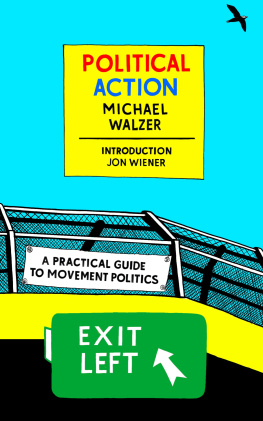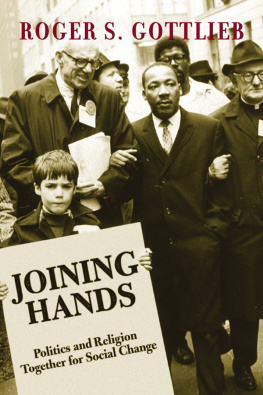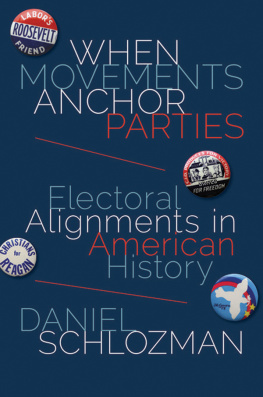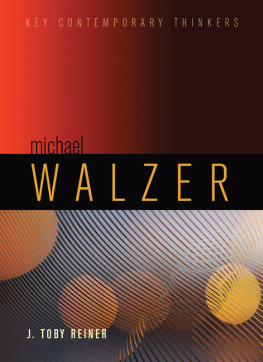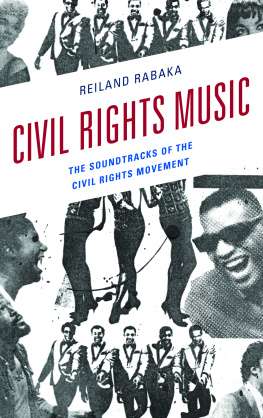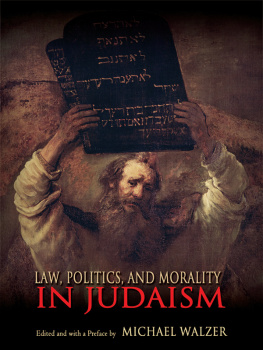MICHAEL WALZER is a professor emeritus at the Institute for Advanced Study in Princeton. He served as the co-editor of the political journal Dissent for more than three decades and has written about a wide variety of topics in political theory and moral philosophy. His most recent book is A Foreign Policy for the Left.
JON WIENER is the host and producer of Start Making Sense, The Nations weekly podcast, and a longtime contributing editor at he Nation. He is a professor emeritus of history at the University of California, Irvine, and his most recent book is How We Forgot the Cold War: A Historical Journey Across America.
POLITICAL ACTION
A Practical Guide to Movement Politics
MICHAEL WALZER
Introduction by
JON WIENER
NEW YORK REVIEW BOOKS

New York
THIS IS A NEW YORK REVIEW BOOK
PUBLISHED BY THE NEW YORK REVIEW OF BOOKS
435 Hudson Street, New York, NY 10014
www.nyrb.com
Copyright 1971 by Michael Walzer; new preface copyright 2019 by Michael Walzer
Introduction copyright 2019 by Jon Wiener
All rights reserved.
Cover image: ESPO for ESPOs ART WORLD
Cover design: Katy Homans
Library of Congress Cataloging-in-Publication Data
Names: Walzer, Michael, author.
Title: Political action : a practical guide to movement politics / by Michael Walzer ; introduction by Jon Wiener ; preface by Michael Walzer.
Description: New York : New York Review Books, [2019] | Series: New York Review Books Classics
Identifiers: LCCN 2018052228| ISBN 9781681373539 (alk. paper) | ISBN 9781681373546 (epub)
Subjects: LCSH: Politics, Practical. | Political participation. Classification:
LCC JF2049 .W25 2019 | DDC 322.4dc23
LC record available at https://lccn.loc.gov/2018052228
ISBN 978-1-68137-354-6
v1.0
For a complete list of titles, visit www.nyrb.com or write to:
Catalog Requests, NYRB, 435 Hudson Street, New York, NY 10014
CONTENTS
INTRODUCTION
T HE IDEA of republishing this book came from some high-school students in Los Angeles. They were part of a social justice group at their school, and most of the projects they were contemplating involved organizing of some kind. To help them think about that, their faculty adviser, Mickey Morgan, a former student of Michael Walzer (and a friend of mine), photocopied parts of Political Action and handed it out. This is really good! they told him. This is what we need. It spoke to them, Mickey said, with its seriousness and straightforwardness and by not being fancy or theoretical, and because the authors voice was so human and thoughtful.
What the kids said next became the impetus for this new edition: Why is there nothing like this? Mickey told me about it and said, I can keep handing out photocopies, but really somebody should reprint the book.
I found my paperback original from 1971. (Although the title had disappeared from the spine, the authors name was still there.) It wasnt hard to see what they liked about the book. But, I asked, werent the kids bothered by the absence of any mention of social media? No, Mickey said. They know all about doing politics on social mediathey dont have to be told. They know its easy to like and share Facebook posts and to retweet good tweets. But of course they are sharing with and tweeting to people who are already their friends or followers. The kids understood the real problem: In order to get people to join your Facebook group and subscribe to your organizations Twitter feed and follow your projects Instagram page, you need to find them and convince them to join. Social media is a key tool for staying in touch with people once youve signed them up. But first, you have to talk to them. You have to persuade the apathetic and educate the ignorant and give hope and maybe even inspiration to those who are discouraged and depressed about politics. The talking part is the key, and its the hardestand its why the kids found this book so valuable.
Although the question of the hour, and the year, is what is to be done about Trump, how to defeat him and his supporters in the next election, the students also liked the book because it was not just about how to do electoral politics. Its about anything you do that involves working in the community. Of course theyre right. Today, for many of Mickeys students, climate change is the biggest concern, and the one they are most passionate to try to do something about.
Then Mickey invited me to talk to the group. I told them that the emphasis in electoral politics today is not on face-to-face canvassing and local organizing. Campaigns are focused above all on fund-raising, most of which goes for television ads. Of course these days it takes huge amounts of money to run for officecontested Senate races in 2016 cost on the average almost $20 million, with about half coming from super PACs. The average House race in 2016 cost $1.5 million. Thats why candidates spend almost all their time fund-raising, most of it on the phone, calling big donors. After paying for television ads, the rest of the money is largely spent on polling and on consultantsthe ones who say fund-raising is everything.
But political scientists have come to a different conclusion from the consultants. Most of the research has concluded that face-to-face, person-to-person conversations are by far the most effective way to persuade the doubters, inform the ignorant, and win new supporters. One-on-one talking is far more effective than television ads. Is anyone surprised by this? Its hard work for candidates to raise money from big donors, but its even harder to run a strong ground game, to organize teams of volunteers going door to door, week after week, keeping track of who theyve talked to, and getting back to supporters when the polls open.
Since 1971, when Michael Walzer wrote this book, many things have changed in American politics. But the situation we face today bears some striking similarities to the Vietnam years, above all, the question of what we can do, what we should do, about a president who fills us with dread and rage. What is to be done? is of course the classic question for leftists facing oppressive regimes and long odds. Those high-school kids thought there was a good answer in Walzers book; it is, as Walzer writes, an invitation to commitment and participation, to get together in groups, to argue at meetings, and then to go out and talk to people.
So I sent my old copy to Edwin Frank at New York Review Books Classics, suggesting they reprint it. He replied, That seems like a good idea.
J ON W IENER
PREFACE TO THE 2019 EDITION
W RITTEN almost fifty years ago, in the immediate aftermath of the American bombing of Cambodia, this book reflects a decade of intense political activity. Since I was aiming at a guide that would be helpful to citizen activists of all sorts, I avoided specific references to sixties politics; I wrote in a generalizing mode. But now I want to describe to new readers some of the concrete engagements that made me a citizen activist and led me to write Political Action.
Movement politics is mostly the work of the young, and I was very young, twenty-five, an unhappy graduate student, when Irving Howe, the editor of Dissent, asked me to fly to North Carolina and talk to and write about the black college students who were sitting in at Woolworth lunch counters. It was February 1960, and the sit-ins were the beginning of The Sixties.


